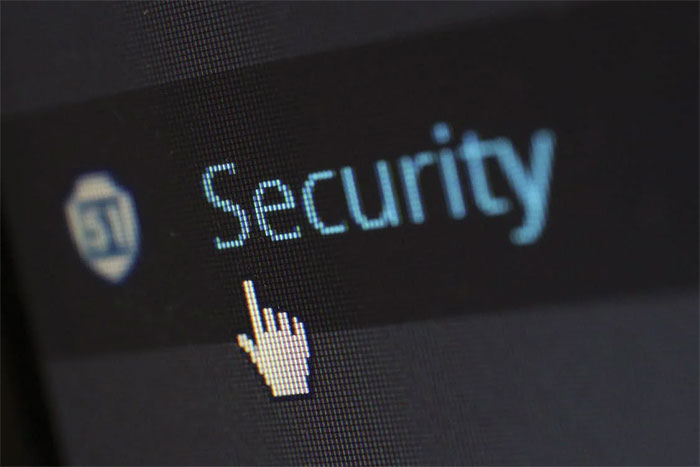| |
| Mac-Hardening Security Tips to Protect Your Files |
| |
| |
|
As cyber threats continue to evolve, it is very crucial to take measures that will protect sensitive data on your PC. Macs have built-in security features that keep your information safe, but there are additional steps that you can take to secure Mac and protect files on your PC.
|
| |

(image source)
|
| |
| |
|
|
Apple is known for its amazing features - from AirPrint to the ability to sync your data across your devices. For example, did you know how to password protect a zip file Mac so that no one gets access to your information on the device? By learning this feature, more users or business owners could avoid data leakage and not worry about their privacy.
In this way, various online tutorials help you get the most out of Apple products, such as learning how to print photos, transfer data to iCloud, and more. Apart from this, Apple is well-known for its strong commitment to user privacy and cybersecurity. It takes various measures to ensure the security of its users' data.
|
| |
|
|
Apple releases regular security updates to address known vulnerabilities and protect its users from cyber threats.
|
| |
| |
|
|
MacBooks come with built-in security features to protect computers, such as Gatekeeper, which helps protect files against threats, and FileVault, which encrypts your hard drive.
|
| |
| |
|
|
Apple has a strict review process for apps that are available on the App Store. This helps prevent malicious apps from being downloaded onto your PC.
|
| |
| |
|
|
Safari is the default browser on MacOS. It protects your privacy and security while you browse the web.
|
| |
| |
|
|
Here are some foolproof, secure Mac security tips that you can implement to safeguard your data.
|
| |
| |
|
One of the simplest ways to harden your Mac’s security is by enabling the built-in firewall. It can block unauthorized access to your PC by monitoring the incoming network connections. To enable the firewall, follow these simple steps.
- Go to System Preferences
- From there, enter ‘Security & Privacy’
- Click on the Firewall
- You will see a lock icon. Tap on it and then select ‘Turn On Firewall’
|
| |
|
|
It is essential to keep your software up-to-date to maintain the security of your PC. The updates contain security patches that address system vulnerabilities. To check for system updates, go to the Apple menu, click on ‘System Preferences’, and then ‘Software Update’.
|
| |
|
|
The simplest way to protect your data on your PC is by using a strong password. Make sure that your password is at least 12 characters long. It should include a mix of lowercase and uppercase letters, symbols, and numbers. Avoid using information that can be guessed easily, such as your birthdate, name, common words, etc.
|
| |
|
|
Two-factor authentication adds another layer of security to your laptop. It requires you to enter a code in addition to your password. This code is sent either to your phone or some other trusted device. To turn two-factor authentication on, simply go to the Apple menu and enter ‘System Preferences’. From there, go to Apple ID and ‘Password & Security’.
|
| |
|
|
FileVault is a built-in feature of MacOS. It allows you to safely encrypt your hard drive. Encrypting your hard drive makes it hard for unauthorized users to access your files even if they get their hands on your laptop. You can enable FileVault by going to ‘Security & Privacy’ and turning FileVault on.
|
| |

(image source)
|
| |
|
|
Even though it may save you some time while logging in, enabling auto-login reduces the security of your laptop. Disable this function so that it becomes hard for unauthorized people to get access to your files. You can disable auto-login in the ‘System & Preferences’. Go to ‘Users & Groups’, then ‘Login Options’. From there, you can turn the automatic login off.
|
| |
|
|
When you download apps online, you need to be careful. Malware can be disguised as legitimate software. Make sure that you download from sources that you trust. If you are downloading from a website for the first time, check its reviews and ratings first.
|
| |
|
|
Use a VPN to protect your online privacy and secure your internet connection. A VPN encrypts your traffic. It routes the traffic through a secure server. This makes it difficult for hackers to intercept your data. There are various VPN services available that you can use, both paid and free.
|
| |
|
|
Antivirus software keeps your PC safe from cyber threats. There are many options available, like Norton, McAfee, and Avast. Choose an antivirus that is reputable and regularly updated.
|
| |
| |
|
|
Here are a few apps that you can use to protect your computer and its files.
|
| |
|
|
It is a powerful firewall app that allows you to monitor and control all incoming and outgoing network traffic on your PC.
|
| |
|
|
It is a popular anti-malware software that detects and removes viruses from your PC.
|
| |
|
|
It is a free app that helps detect and remove persistent malware from your MacBook. It scans your computer for hidden files and programs that may be causing problems.
|
| |
| |
|
|
Taking steps to harden your Mac's security can not only protect your sensitive data but also give you peace of mind. By following the above tips, you can ensure your files are safe from unauthorized access and cyber-attacks.
|
| |
| |
|
|
|
| |
| |
| |
| |
| |
| |